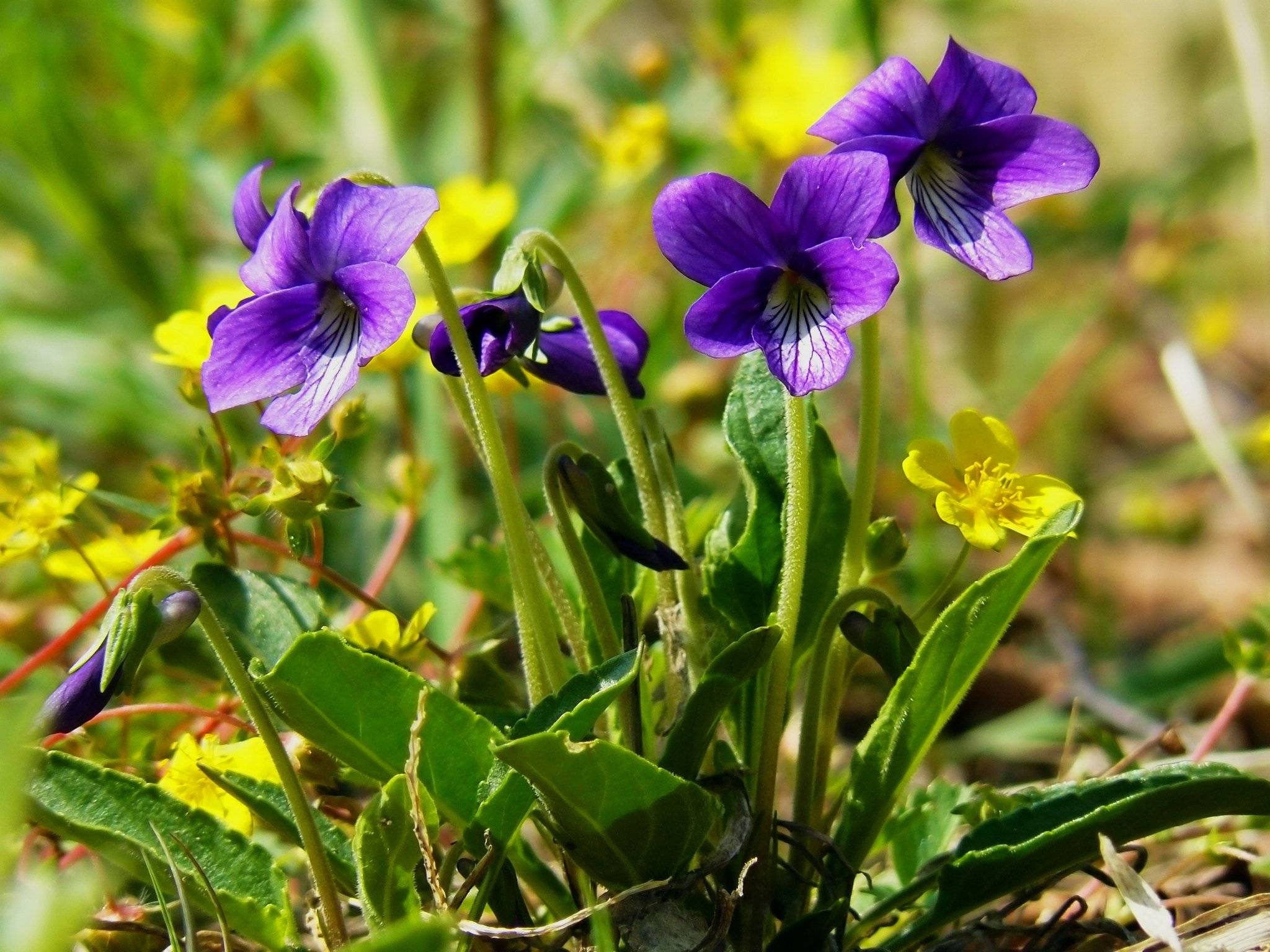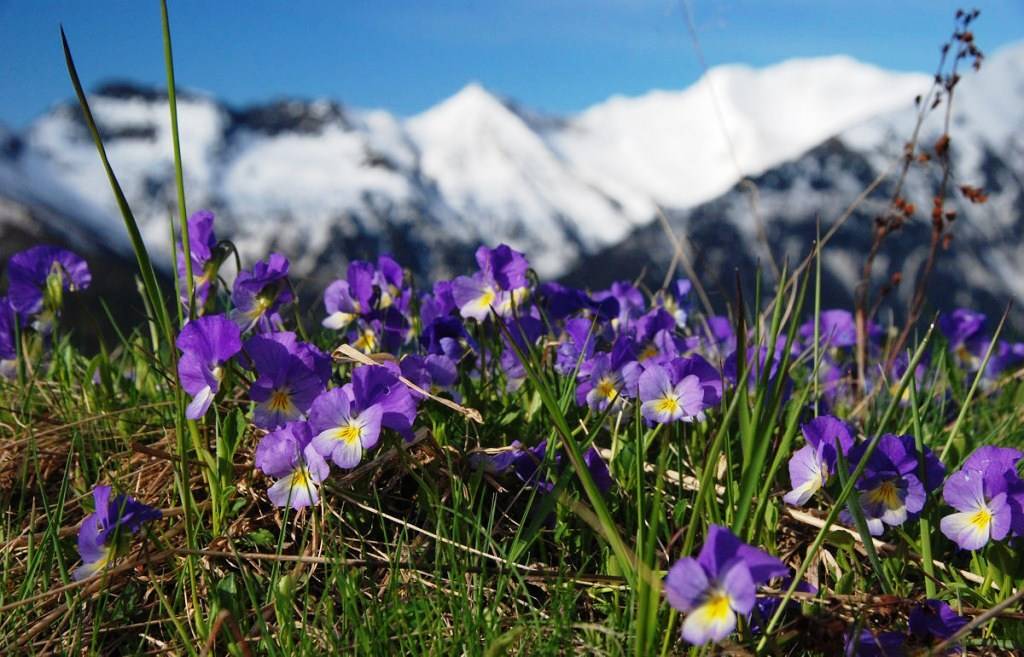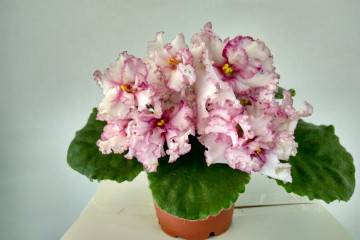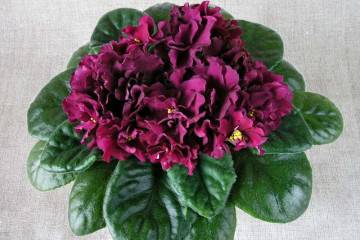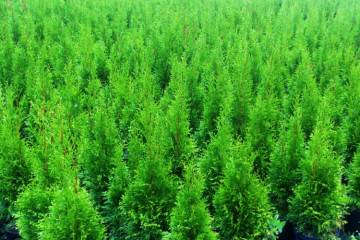Forest violet - description, varieties and characteristics of varieties
Content:
Wild violets are increasingly seen in garden plots. Delicate, blooming almost continuously all summer, the forest guest is also famous for its medicinal properties. Knowing how to properly grow this flower in the country, you can get not only a beautiful plant, but also a natural remedy for many diseases.
Description of forest violets
The wild violet belongs to the Violet family. There are several hundred species of this perennial flower. The plant forms shoots no more than 15 cm, flowers of 5 petals are formed on peduncles. Depending on the species, it can have different colors: white, blue, purple, yellow and various combinations of these colors with all possible shades.
Briefly about the history of appearance
East Africa is recognized as the homeland of the forest violet. From this region, the culture spread to other latitudes. Since 1893, the plant has been actively cultivated in horticulture, thanks to which many beloved pansies of various varieties, sizes and colors have been obtained. Today the violet can be found in North America and even in Japan.
What is the difference from indoor
The so-called indoor violets (saintpaulias) have nothing to do with forest violets. Flowers belong to different families and grow in different conditions, although both are herbaceous and similar in flower shape.
Common varieties
Many species of wild violets are now extremely rare and are included in the Red Data Books. In Russia, in natural conditions, you can find about 20 species.
| Name | Habitat | Description of flowers (size, color) | Flowering time |
| Tricolor (pansies) | In the forest or field like a weed | Blue upper petals and white lower ones, yellow center. | May-September |
| Doggy | At the edge of the forest, in the field | Small completely blue flowers | May |
| Swamp | Swamps, floodplains, mossy forest | Flowers pale blue to white with dark veins. | May-August |
| Field (Viola arvensis) | Open forest glades and edges, fields, roadsides | The field violet has white flowers with a bright yellow heart. Peduncle up to 30 cm. | April-September |
| Fragrant | Forest | Intense violet-blue color, have a pronounced aroma | April May |
| Altai | Mountain slopes | Purple and blue, yellow core, peduncle up to 20 cm | Twice: April-May, September-October |
| Yellow | Woodland | Intense yellowish green with purple veins on the underside of the petals. | June July |
| Holmovaya | Open area, woodland | Large pale blue or purple, long peduncle. They have a characteristic aroma. | May June |
| Incised | Siberia | Deep purple inflorescences, raised above the rosette, look like cyclamen. | June July |
Features of the view
When grown in a garden in a flowerbed, a forest violet, as in nature, tends to occupy a large area. To control the growth of the flower, you need to regularly pinch the shoots.
The creeping stems perfectly fill the space of the alpine slides, forming a flowering carpet. When planted in the shade, the viola will have paler flowers, but the flowering period itself will be longer. It is recommended to select elevated areas to avoid stagnation of moisture at the roots.
Recommendations for planting and caring for wild violets
Wild violets take root quite easily in the conditions of the personal plot. The main thing is to initially choose the right place and decide on the method of growing.
Soil, illumination, degree of moisture
The quality of the soil on which wild violets grow can vary significantly depending on the type of plant. Some viols prefer soil with a slightly acidic reaction, while others prefer an alkaline one, some need a loose light earth, and others - dense and moist.
Landing in open ground
The easiest way to grow a forest violet is to separate several young rosettes and place them in your country house in conditions close to natural. Already in the next season, the plant will begin to bloom and grow actively. Bushes should be taken along with roots and a clod of earth. Planting material is planted at a distance of 20-30 cm between seedlings.
Field violet reproduces well by self-sowing, but you can try to germinate seedlings. For soil, sand, peat and a little humus are added to the leafy ground. The seeds are scattered over the soil, sprinkled a little, moistened and covered with a film.
The main requirements for obtaining viable seedlings are regular watering and ventilation. In the future, the flower does not require careful maintenance. The plant hibernates without shelter, easily tolerates drought. Prefers areas in the shade, but can grow in the sun, if sufficient watering is provided.
Pest prevention
Preventive action consists of observing suitable growing conditions and systematically examining the leaves and flowers of the violet. When attacking clover moths and nematodes, folk remedies are effective at the initial stage. When there are too many insects, it is recommended to resort to appropriate insecticides.
Can I plant indoors
In indoor conditions, a forest white violet, and any other, does not take root well. The flower needs room to grow. Being constrained by the pot, the viola root system will quickly start to rot, and the plant will die.
When and how it blooms
The flowering period of wild violets differs depending on the type of flower and growing conditions. Most of the common varieties bloom continuously throughout the summer. Some viols, such as canine, mound and scented, fade in late spring and early summer. No special additional care is required at this time.
Most wild violets have flowers consisting of five petals, 2 of which are located at the top and 3 at the bottom. They can be split or fused at the base. The flowers of certain species, such as the rare incised violet, are more like cyclamen.
Breeding features of meadow violets
The meadow violet variety reproduces exclusively by seeds. Separating and replanting rosettes of violets from the field may not work. Seeds can be planted in open ground or boxes for seedlings. In the first case, it is necessary to find a shaded place so that the tender sprouts do not overheat in the open sun.
The use of field violets in folk medicine
The plant contains essential oils, vitamins A, C, E and other useful substances.
Forest viola can be used:
- to lower the temperature;
- for gargling a sore throat;
- as an expectorant;
- with headaches;
- as a diuretic, hemostatic, antiallergenic, antirheumatic agent.
Many, having met a forest violet, do not think about the possibility of growing it on the site. However, wild varieties of viola are capable of both decorating a vegetable garden and becoming a raw material for medicinal purposes.
